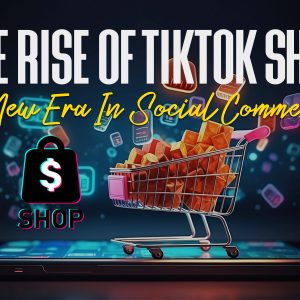
In the bustling marketplace, where countless products vie for attention, pricing stands as a silent yet powerful differentiator. It’s the whispered promise of value, the delicate dance between profit and customer satisfaction. For marketers, mastering this art is key to unlocking sustainable success.
This article delves into the 6 most effective pricing strategies that will equip you to navigate the complex world of value perception and customer behavior. Whether you’re a seasoned marketer or a budding entrepreneur, these insights will empower you to make informed pricing decisions, optimize profitability, and build a loyal customer base.
1. Understanding the Value Landscape:
Before setting a price tag, it’s crucial to understand the value landscape your product exists in. This involves:
- Cost Analysis: Calculate your production costs, marketing expenses, and distribution overheads. This forms the baseline for your pricing structure.
- Competitive Analysis: Research your competitors’ pricing strategies. Identify price gaps you can exploit or premium positioning opportunities.
- Customer Value Perception: Understand how your target audience perceives the value your product offers. Conduct surveys, focus groups, and market research to gauge their willingness to pay.
2. The Power of Penetration Pricing:
Launching a new product? Penetration pricing can be your secret weapon. This strategy involves setting a lower-than-average price to quickly gain market share and brand awareness. It’s ideal for:
- New entrants: Establishing a foothold in a competitive market.
- Disruptive innovations: Driving rapid adoption of a novel product.
- Seasonal promotions: Stimulating demand during off-peak periods.
However, remember, penetration pricing can lead to price erosion and hurt long-term profitability. Use it strategically and have a clear exit plan to transition to a more sustainable pricing model.
3. Premium Pricing: The Art of Exclusivity:
For products that offer unique value, superior quality, or premium experiences, premium pricing can be a game-changer. This strategy involves setting a higher-than-average price to convey exclusivity, prestige, and enhanced value perception. It’s effective for:
- Luxury brands: Reinforcing brand image and attracting high-end clientele.
- Innovative products: Commanding a premium for cutting-edge technology or features.
- Personalized services: Highlighting the value of bespoke experiences.
Remember, premium pricing requires a strong value proposition and differentiation strategy. Ensure your product truly justifies the higher price tag.
4. Bundling: Synergistic Value Creation:
Sometimes, the sum is greater than its parts. Bundling involves combining complementary products or services into a single package offered at a discounted price. This strategy leverages the perceived value of the combined offering, driving customer satisfaction and profitability. It’s ideal for:
- Clearing slow-moving inventory: Bundle slow-selling items with popular ones.
- Introducing new products: Encourage trial of new offerings by bundling them with established favorites.
- Upselling and cross-selling: Increase average order value by offering value-added bundles.
However, be careful not to over-bundle. Complex packages can confuse customers and dilute the value proposition.
5. Psychological Pricing: The Art of Nudging Behavior:
Our minds are susceptible to subtle psychological cues, and marketers can leverage this to their advantage. Psychological pricing involves using techniques like:
- Charm pricing: Setting prices ending in 9 (e.g., $19.99) to appear lower than they are.
- Price anchoring: Highlighting a higher reference price to make your actual price seem more reasonable.
- Loss aversion: Emphasizing limited-time offers or scarcity to create a sense of urgency.
These tactics can nudge customers towards purchase decisions, but use them ethically and responsibly. Avoid deceptive practices that erode trust.
6. Value-Based Pricing: Aligning Price with Customer Perception:
Ultimately, the most sustainable pricing strategy is based on customer-perceived value. This approach involves understanding how your target audience values the benefits and features your product offers, and then setting a price that reflects that value. It requires:
- Value proposition development: Clearly articulate the unique benefits and problem-solving capabilities of your product.
- Customer segmentation: Identify different customer segments with varying value perceptions.
- Conjoint analysis: Conduct research to understand how customers trade-off different product features and price points.
Value-based pricing fosters long-term customer loyalty and builds brand equity. It requires ongoing market research and adaptation, but the rewards are substantial.










